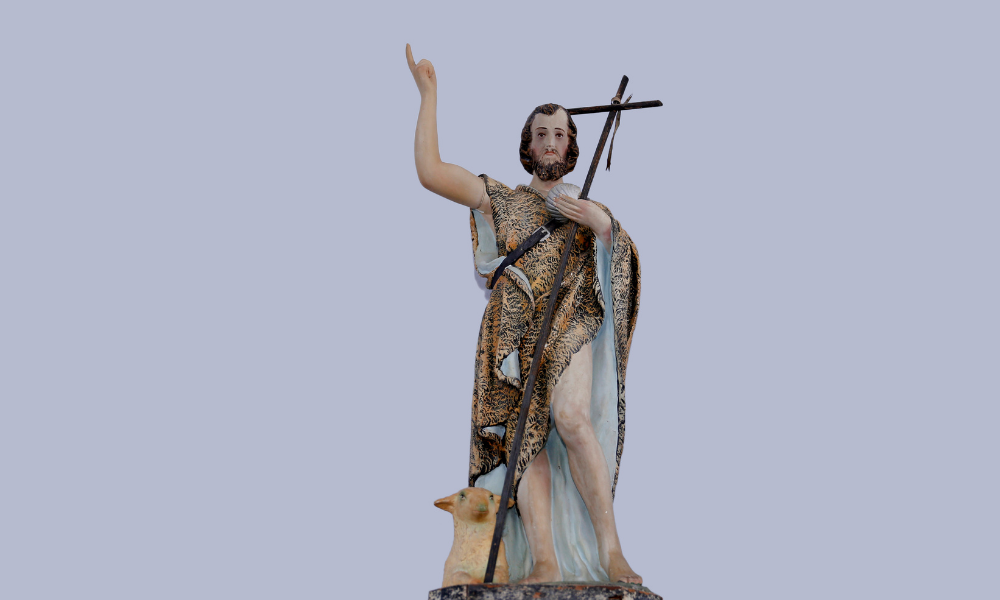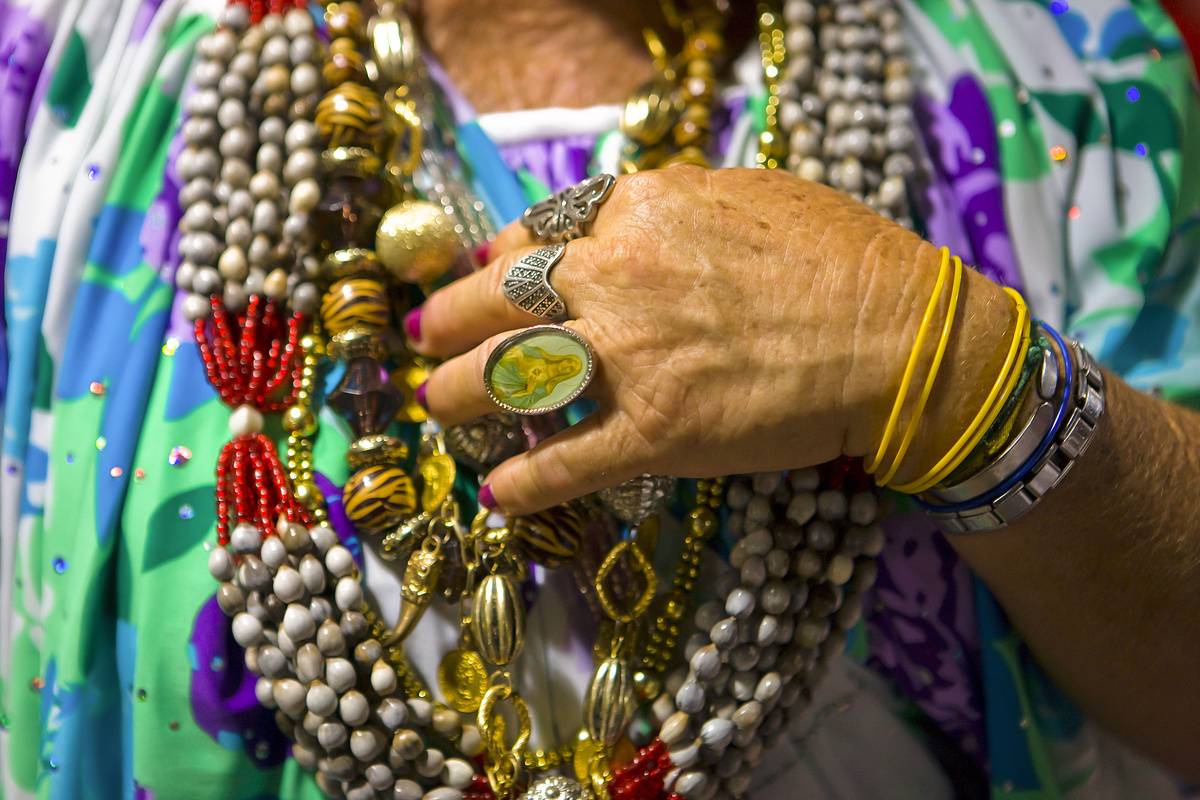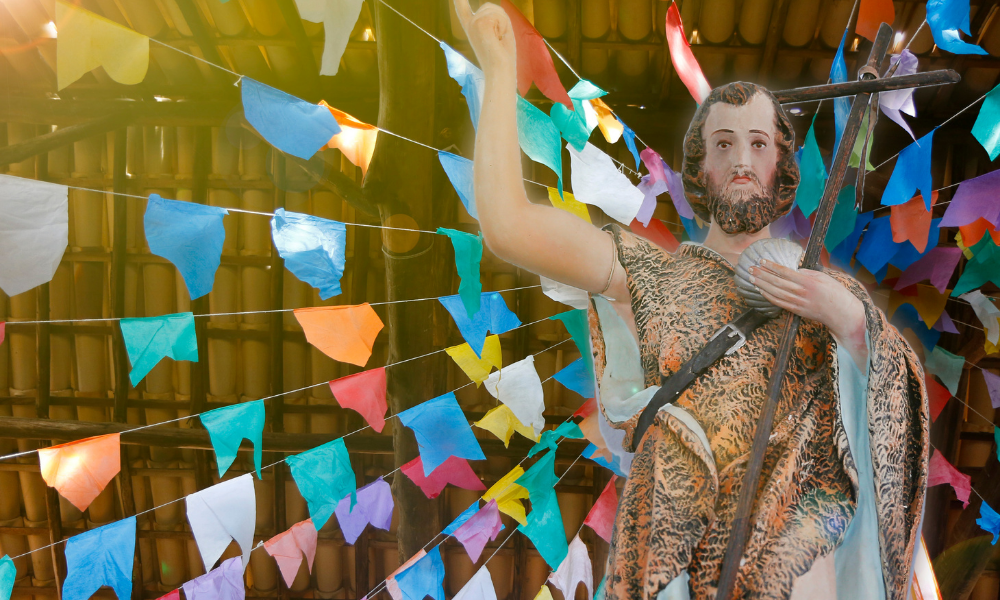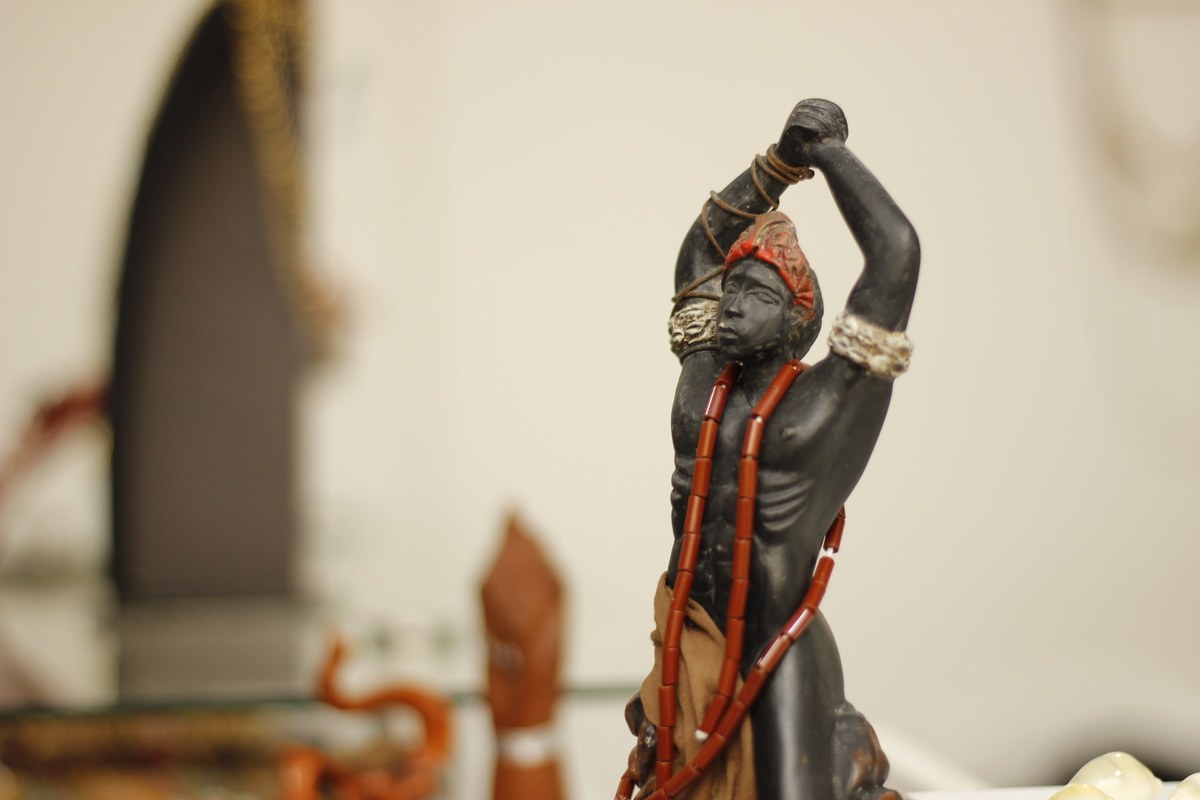Table of contents
Saint John is Xangô in Umbanda!

The religions of African matrix have a syncretism with others, such as Catholicism, where the orixás and saints are compared by their characteristics and ways of acting. For Umbanda, Saint John is seen as Xangô. His power is manifested in the quarry and he is known as the Lord of Justice.
Due to the characteristics of Saint John and Xangô, they are seen as equals by Umbanda. The orixá is linked to balance and nature, besides being considered as the god of fire, thunder and lightning. Saint John was responsible for the baptism of Jesus, and due to this act in consideration to the purification of fresh water, he became linked to Xangô, by the connection with nature. See more below!
Foundations of syncretism between Saint John and Xangô

The syncretism of Xangô and Saint John can be understood in many ways, due to the acts and connections that both have with nature and fire, for example. Xangô is considered to have the power of fire and through this element he can destroy everything that is bad and transform it into something good, as in an act of purification.
Catholicism, on the other hand, over a certain period began to encourage the faithful to light bonfires to pay homage to certain saints, such as Saint John. The bonfires that are traditionally lit in June are seen with the same purpose as Xangô, to turn evil into good. Read more!
What is syncretism?
Religious syncretism can be seen as a practice of religions with the intention of favoring a fusion between others, such as the connection between the orixás of Umbanda and Candomblé that are linked to the saints of Catholicism.
There is also the possibility of seeing syncretism as a fusion between religions to create a new doctrine. However, the most common thing to be observed, in fact, is the comparison between practices and elements that can be noted in both merged religions.
Relationship between syncretism and colonization
Syncretism is a more common practice in Brazil, which has become increasingly widespread due to historical issues, stemming from the colonization periods responsible for the formation of the Brazilian people.
Thus, syncretism aims to merge several doctrines finding similarities between the elements and practices adopted in each one of them. This was a complex process in the history of Brazil, because with colonization, people with different doctrines began to spread their practices and associate the elements contained in each one of them.
Other known syncretisms
There are several religious syncretism in Brazil, which arose in the colonization period where several peoples ended up being united. The most common fusions to be highlighted in fact are the Christian and African ones, but it is also necessary to highlight the fusions of indigenous and Christian beliefs, which also occurred in those periods.
Other fusions such as indigenous-African and indigenous-Christian-African also have records. There is no actual chronological order to the events, but through religious practices and celebrations it is possible to note the connection between these matrices.
Knowing more about Saint John the Baptist

Saint John the Baptist is a saint of the Catholic Church who can be highlighted by several accomplishments in his life. The story from the saint's birth to the time he served Jesus, his cousin, is full of important details and fascinating stories.
Therefore, it is important to know more in depth the history of this saint, to understand why he is so important to the Catholic Church and also at what points he connects with other religions and practices and the reasons why this is noted. Read more below.
Origin and history
The story of St. John the Baptist begins in the friendship between St. Elizabeth, his mother, and Mary, the mother of Jesus. As close friends, Elizabeth shared with Mary the revelation that she would have a child, and Mary was interested in how she would receive the information of the child's birth.
The two then agreed that a bonfire would be lit so that Mary would receive information of the birth from afar. On June 24, Isabella fulfilled her promise and, before the birth of John the Baptist, lit the bonfire to warn Mary.
Visual characteristics
Saint John the Baptist is seen with simple and dark clothes, always linked to some element that is part of nature. Another detail in the images seen of this saint is that he is always carrying a cross with him. Besides his red mantle, which is part of the symbolism of this saint.
In the images, Saint John is always seen with his hand raised, and this act represents the preaching he did on the banks of the Jordan River. In his left hand, the saint carries a shell, which symbolizes his mission as a baptizer.
What does São João represent?
For religious people, Saint John the Baptist represents first of all the announcement of the birth of Jesus Christ, because he is the forerunner of Jesus, responsible for communicating to everyone that the Savior would be coming to save humanity.
Another important point concerning this saint is that he is considered to be the last of the prophets, for he prepared all the way for the arrival of the Lord Saviour, preaching through the deserts and drawing crowds around him with the sole objective of transmitting to all the power of his preaching.
Devotion
The devotion to Saint John the Baptist is something very old for the faithful of the Catholic Church. But over the centuries this became even greater, because this saint was solidified before the faithful, as it was understood that Saint John the Baptist was the pathway of Jesus Christ, who came to Earth with a unique mission to announce the arrival of the Messiah.
As the years went by, Catholics started to treat this saint with even more devotion and this can be noticed in the festivities in the month of June that commemorate the passage of Saint John the Baptist on Earth.
Prayer to Saint John
O Glorious Saint John the Baptist, prince of the prophets, forerunner of the divine Redeemer, first-born of the grace of Jesus and the intercession of his most holy Mother, who was great before the Lord, by the stupendous gifts of grace with which you were marvelously enriched from your mother's womb, and by your admirable virtues, obtain for me from Jesus, I earnestly beseech you, the grace to love him andserve with extreme affection and dedication until death.
Also obtain for me, my excellent protector, a singular devotion to the Blessed Virgin Mary, who for love of you went with haste to the house of your mother St. Elizabeth, to be filled with the gifts of the Holy Spirit. If you obtain for me these two graces, as I hope very much from your great goodness and powerful courage, I am certain that, loving Jesus and Mary to death, I will save my soul and in heaven with you and withall the Angels and Saints I will love and praise Jesus and Mary among eternal joys and delights. Amen."
Knowing more about the orixá Xangô

Xangô is one of the most powerful orixás worshiped in Umbanda and Candomblé in Brazil, among other religions of African origin around the world. He represents justice and is seen as being a virile, aggressive and manly orixá by his actions. In some cases, he is also seen as violent, but just.
The history of Xangô is full of riches and details that highlight this orixá as being very seductive, beautiful and that rarely any woman could resist his charms, and no wonder he was disputed by three of the most powerful orixás. Read below some details about Xangô!
Origin and history
The history of Xangô highlights the fact that he is the son of Bayani and husband of Iansã, known as the Goddess of the Winds. One of the greatest certainties surrounding the life of Xangô is that this orixá was born to reign and the legends point precisely to this, for he has always shown himself to have a keen sense of justice.
Throughout his life, Xangô was always attentive to his people and in times of their sadness and desolation, he exercised his role as god of justice and fought the enemies of his people with strength and vigor.
Visual characteristics
The visual characteristics of Xangô show him as an orixá who wears red and white, which are his colors. Another detail about this orixá is that he always carries his axe, which he uses to impose himself and demand justice for his people.
Because he is very vain, Xangô always walked neat and tidy and even braided his hair, according to the history of this orixá. The vanity of Xangô can be noticed even in his actions and his children, who are influenced by these characteristics.
Day and other characteristics of Xangô
The day to commemorate Xangô is September 30, considered a time of celebration in religions of African origin, such as Candomblé and Umbanda. In the terreiros, the orixá can be commemorated in various ways, with offerings, prayers, dances and moments dedicated solely to celebrating his existence.
The colors that are related to Xangô, like red, are to symbolize the fact that this is an orixá very connected to the element of fire. He can be seen through several distinct qualities and each one of them has a specific detail or directed action.
Relationship of Xangô with other orixás
Xangô has a very close relationship with several other orixás. One of his main connections is with Obá, whom he married. The story of these two orixás shows that Xangô's wife was so devoted to him that she was capable of doing anything for her husband.
Not only her, but also Oxum and Iansã, other wives of Xangô who were able to do whatever was necessary for him, including a dispute between the three for the love of this powerful orixá.
Prayer to Xangô
Lord my Father, infinity is your great dwelling place in space, your point of energy is in the stones of the waterfalls. With your justice you have made a construction worthy of a king. My Father Xangô, you who are defender of the justice of God and of men, of the living and of those beyond death, you, with your hatchet of gold, defend me from injustice, sheltering me from the evils, from debts, from the malicious persecutors.
Protect me my glorious Saint Jude Thaddeus, Father Xangô in Umbanda. Always justiciar in the paths in which I come to pass with the strength of this prayer, I will always be with you, freeing me from despair and pain, from enemies and envious, from individuals of bad character and false friends. Axé".
Syncretism between Saint John and Xangô

The syncretism between Saint John the Baptist and Shango can be noticed due to some aspects and characteristics shown by both. The main point to be highlighted is about the capacity that both have to purify with their powers and actions.
Saint John was regarded as a baptizer, while Xangô is an orixá connected to justice, who lived and fought to help his people. Like John the Baptist he walked through deserts in order to talk to the people through his preaching and help them through his own efforts. Read more below.
Similarities
The similarities to be highlighted regarding John the Baptist and Shango are shown through the actions of both, which aim to help people with their own hands and dedicated efforts to the justice their people deserve.
Another detail is the connection between the two with fire, Xangô is known to be able to manipulate fire and through it, purify. John the Baptist is honored with bonfires, which have the same purpose of purification. These are some of the points in which the two are similar and show the reasons why they are syncretized.
Distances
As much as they are similar in their respective religions, Xangô and Saint John the Baptist are not similar in everything. The practices and way of acting of both can distance them a little. Xangô is an orixá considered virile and aggressive, something that is not noticed in the descriptions about the saint.
Therefore, it must be taken into consideration that even being syncretized, the two have distinct characteristics and actions in their environments.
Refusals to syncretism
Some practitioners of the religions in question, Umbanda, Candomblé and Catholicism, may not clearly accept this syncretism. Just as several others may also be rejected. Despite the similarities, the religions have their own practices and determinations, and it is possible that they do not see it that way, depending on the practices they adopt.
Therefore, as much as there is this knowledge about the syncretism between Xangô and Saint John the Baptist, there may be a refusal to associate the two religious figures.
After all, is the syncretism between Saint John and Xangô valid?

The syncretism between St. John the Baptist and Xangô is valid for the fact that this association, due to the characteristics and similarities between the two, is accepted by many practitioners of the religions mentioned. But, as highlighted, many may not actually accept this comparison. This will depend on the place and practice adopted by each religious house, whether a terreiro or Catholic church.
Therefore, since syncretism is common knowledge, it can be considered valid, but acceptance will depend on the practitioners. This is an important caution to be taken, because religions are very changeable and over the years have undergone adaptations precisely provided by this syncretism.

